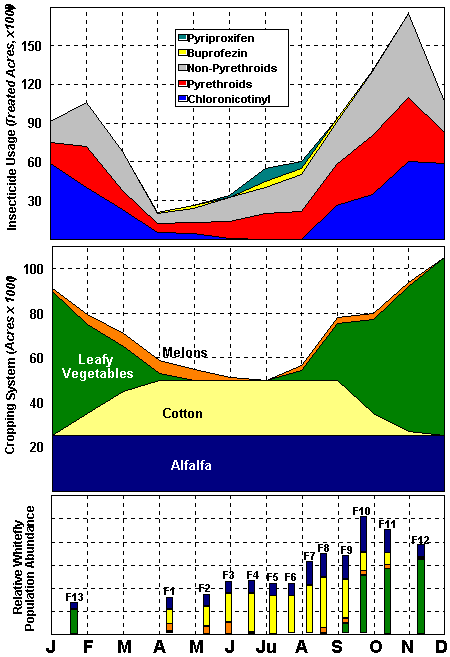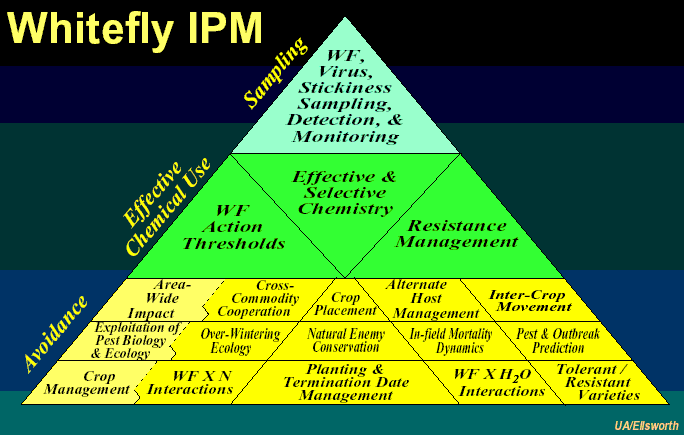Concerns for Whitefly Management in Multi-crop Communities
Draft Guidelines for Cross-Commodity
Management
of Whiteflies in Arizona
(PowerPoint
version, 491KB)
(PDF version,
509KB)
|
|
|
Arizona Cross Commodity Working Group |
|
|
|
Multi-crop Community more than one host-crop is grown in significant acreage within the same community.
|
Yuma
|
|
Cotton-intensive Community cotton is the dominant WF host crop grown in a crop community.
|
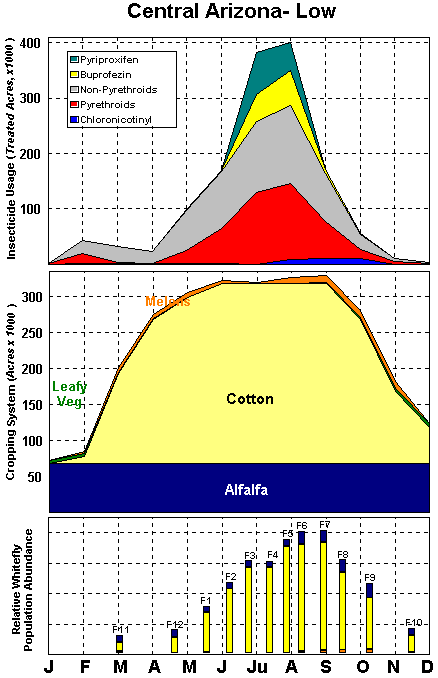 |
Principle Treated WF Hosts by Community
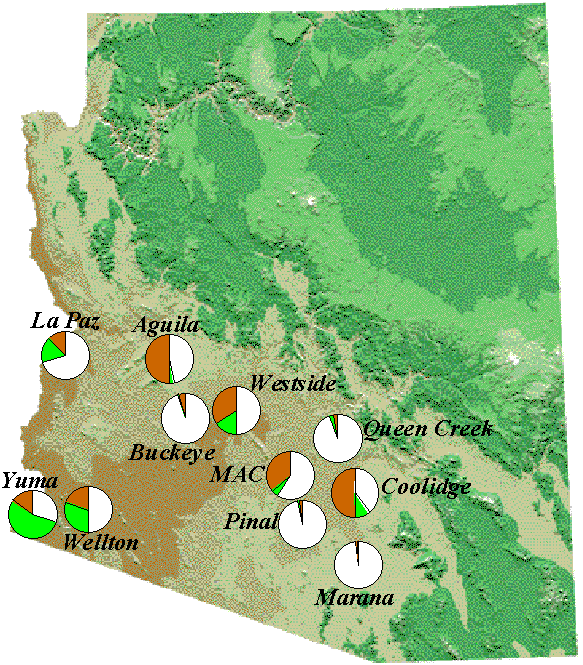
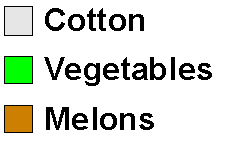
| General Whitefly Management
Guidelines
|
Cross-commodity
Guidelines for Applaud/Courier
|
|
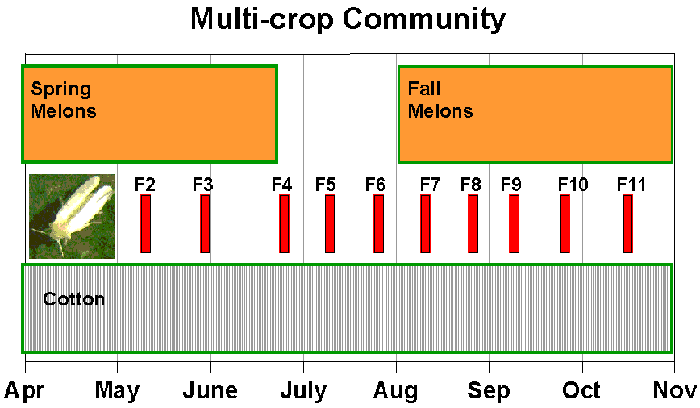
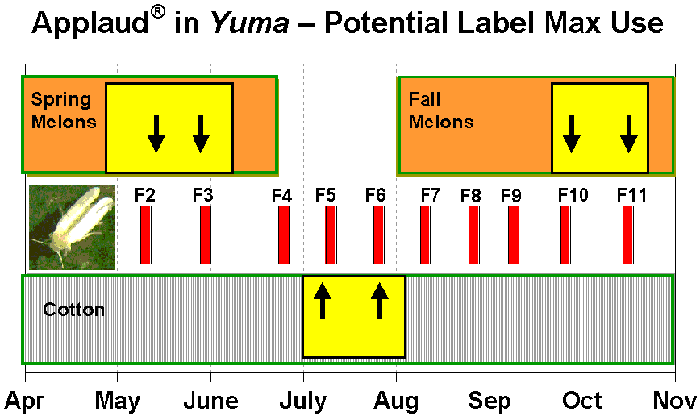
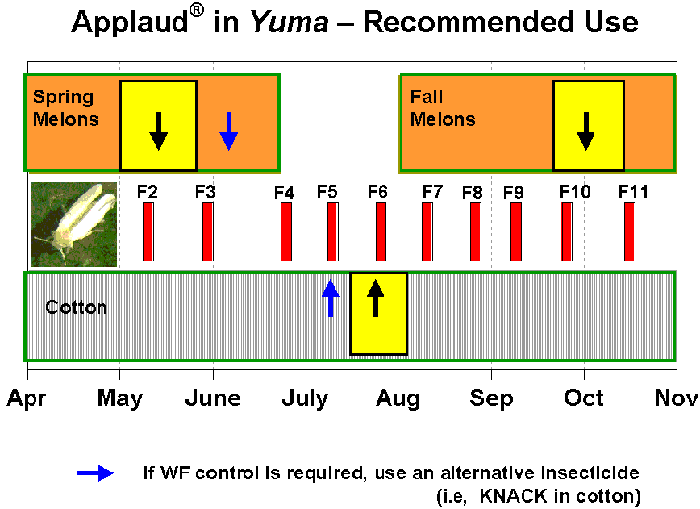
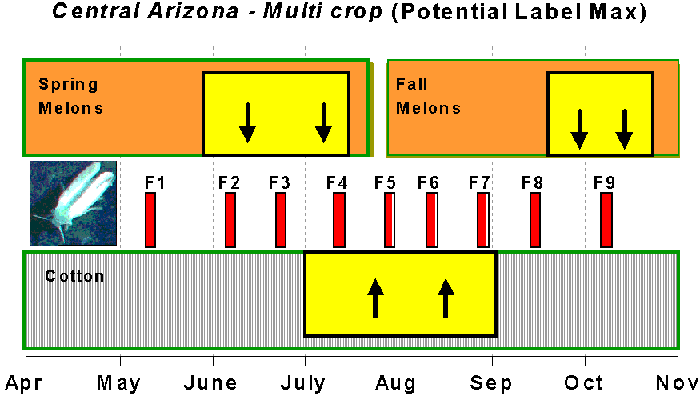
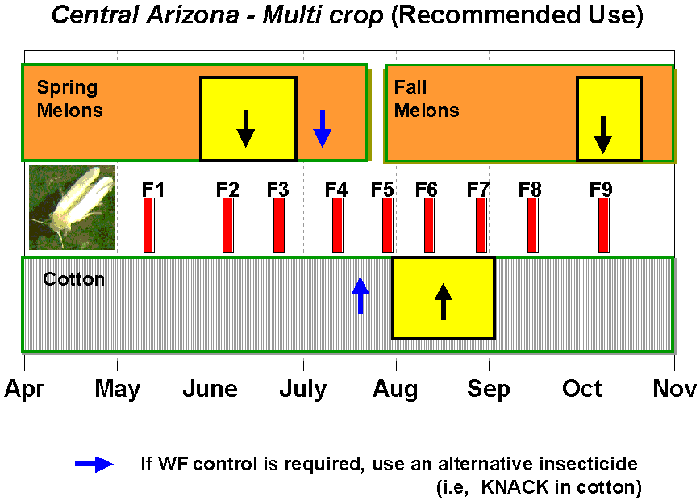
|
|
|
|
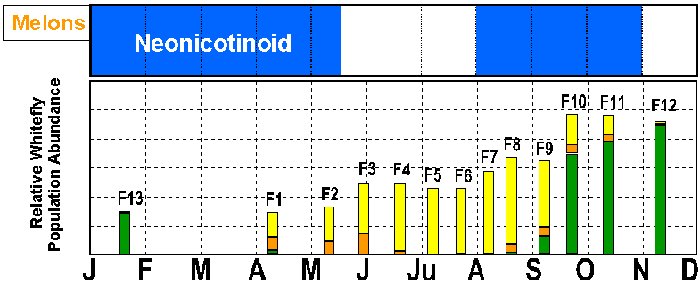
|
|
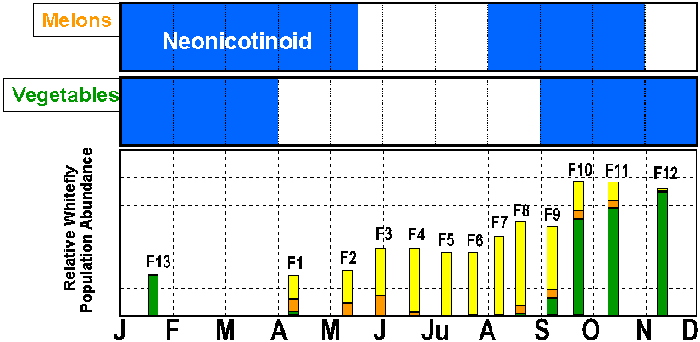
|
|
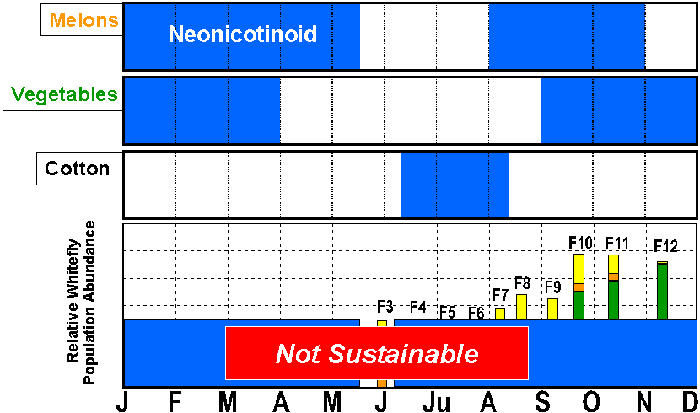
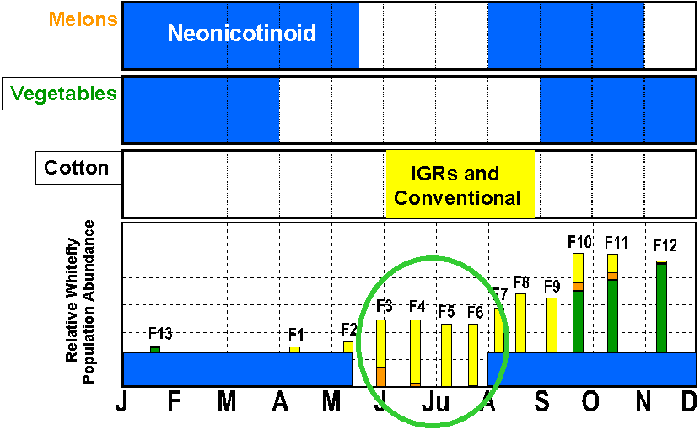
|
|
|
|
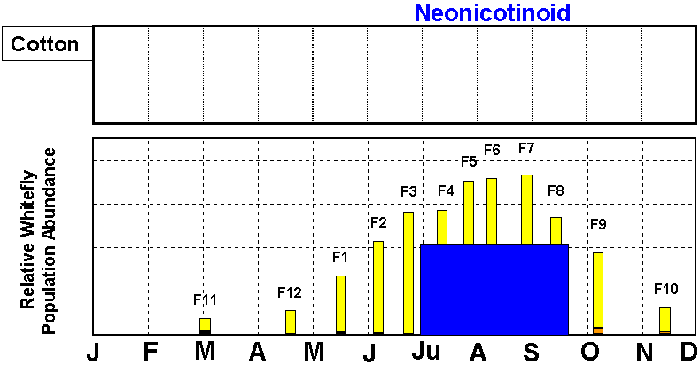
|
|
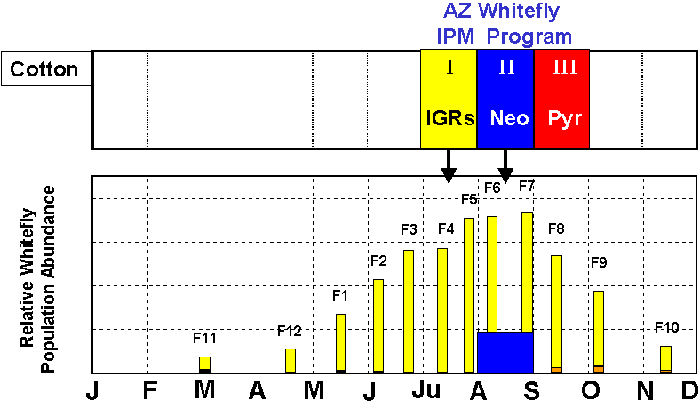
|
|
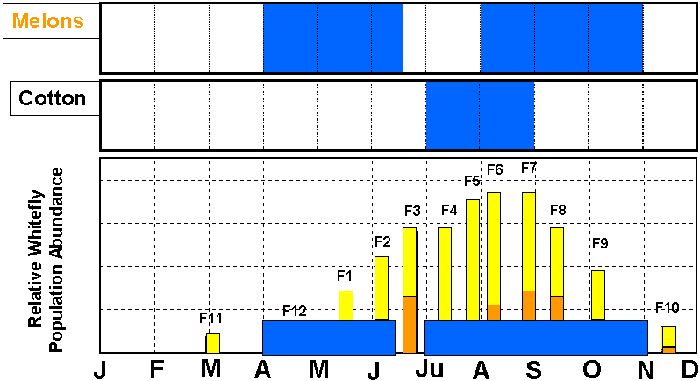
|
Resistance Risks Associated with Neonicotinoid Uses in a Cotton-Melon System (central Arizona-recommended use) |
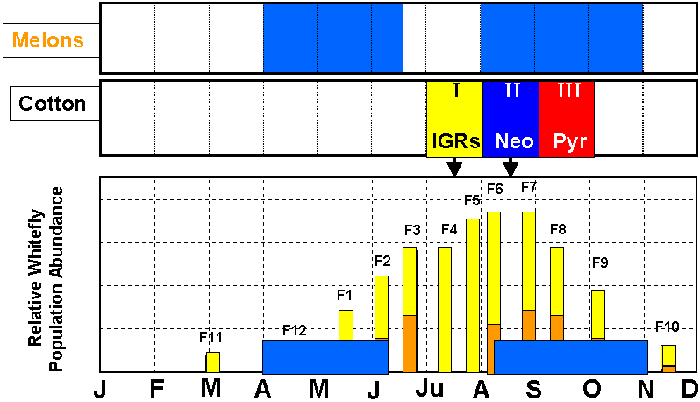
 |
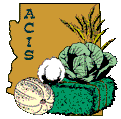 |
| Label | Proposed CC Guidelines |
| Applaud/ Courier | 2 uses per crop | 1 use / crop, narrowed use window |
| Assail, Actara, Adage, Provado, Leverage | 2-4 uses per crop | No use on Cotton
in MCC Limit use in Veg / Melon No more than 2 nonconsecutive uses in cotton intensive communities, and only after Stage I - IGR |
Issued in furtherance of Cooperative Extension work, acts of May 8 and June 30, 1914, in cooperation with the U.S. Department of Agriculture, James A. Christenson, Director Cooperative Extension, College of Agriculture, The University of Arizona.
The University of Arizona is an equal opportunity, affirmative action institution. The University does not discriminate on the basis of race, color, religion, sex, national origin, age, disability, veteran status, or sexual orientation in its programs and activities.
Because labels are subject to frequent change, always consult the label attached to the product before using any pesticide. The user must assume responsibility for proper application and for residues on crops as well as for damage or injury caused by pesticides, whether to crop, person or property.
Any products, services, or organizations that are
mentioned, shown, or indirectly implied in this web document do not imply
endorsement by The University of Arizona.
For more information on the material in this document contact:
John C. Palumbo, jpalumbo@ag.arizona.edu Research Scientist (Entomology)
Peter C. Ellsworth, peterell@ag.arizona.edu Specialist, IPM/Entomology
College of Agriculture, The University of Arizona.
Material written March 2002.
Insects | Diseases| Weeds | Pesticides | Home | Cotton | Veggies | Forages | Grains | Citrus | Crop x Crop | News| Weather | Research | Photos | Contacts | General Info. | Site Map
Copyright © 2001 University of Arizona,
College of Agriculture and Life Sciences
Webmaster: Al Fournier (fournier@ag.arizona.edu)
